All about guinea pigs: what do they look like, where do they live and how to keep them?

Guinea pigs are small pets. These rodents owe their origin to the genus of pigs. It is worth noting that they have nothing to do with farm pigs. The natural habitat is the South American continent. Today they are very popular among animal lovers, due to their calm disposition and the complete absence of aggression towards humans.


Origin story
Guinea pigs are known to live in the wild in South America. In this regard, the tribes living in this area made a huge contribution to the domestication of these animals. This happened several thousand years ago, approximately in the fifth millennium BC. The modern inhabitants of the northern part of South America added these animals to their food.
For some time, these mammals were considered sacrificial animals. The Inca people sacrificed guinea pigs to the sun god. South American tribes had a special love for rodents, which had a white or brown coat.

In the modern world, breeders have developed a very large number of new breeds. They number about six thousand species of guinea pigs. These little animals originated from Cavia aperea tschudi. The animal lives in the modern territory of Chile.
The ancestor of guinea pigs outwardly has significant differences from our usual pets. This is due to the peculiarities of the natural habitat. Animals have access to a forage base saturated with cellulose, but the region is very poor for water.
These animals live in small colonies. They choose rather spacious burrows under the ground as a dwelling.


Description
Guinea pigs come from the family of half-hoofed rodents. They have an appropriate appearance and body structure.
- The rodents' body shape resembles a small cylinder. In length, it can reach 22 centimeters. Sometimes there are representatives of larger sizes.
- The spine of guinea pigs is complex and consists of the cervical, lumbar, sacral, thoracic and caudal vertebrae.
- The collarbone in these animals is completely absent, the same applies to the tail.
- Boys are much larger than the female half of the animals. An adult guinea pig weighs on average 1.2 kilograms.
- The limbs of guinea pigs are small. The hind legs are longer than the front legs.
- Animals have three toes on their hind legs, and four on their front legs. They look like small hooves.
- In a week, the animal's hair can grow half a centimeter.
- The head shape is very large. Has a high degree of brain activity.
- The animals' teeth grow continuously throughout their life. In a week, the incisors can grow by 1.5 millimeters. These mammals have very powerful teeth, so the animals can easily gnaw on roots and plant stems.
- The digestion process takes quite a long period of time. This is due to the large length of the organ.
- Guinea pigs can be found with both long and short coats. The color of the cover is not limited to one color and can be varied.
- In the wild, the maximum age of animals does not exceed seven years. At home, it is determined by proper care and maintenance of the pet. The lifespan of a domesticated rodent can reach fifteen years.






Lifestyle
Wild guinea pigs are energetic animals; they usually show their activity in the morning time of the day or in the evening after sunset. It is almost impossible to take these animals by surprise. They are restless and nimble. Guinea pigs live in mountainous areas. They can also be found in forest areas.
If the animals do not find large and deep holes, they equip themselves with a dwelling in the form of a nest. The place is chosen to be quiet and secluded. Rodents strengthen their home using thin twigs of plants and dry grass.

Guinea pigs do not tolerate loneliness, so they unite in colonies and live on the same perimeter. The number of females in a flock is usually several times greater than the number of males. Pets mostly live in large cages. They need a lot of walking space. Guinea pigs sleep several times a day. In some cases, the animal can rest with open eyes.


Guinea pigs perfectly tolerate high and low temperatures, as well as their fluctuations. Immature rodents may not survive the onset of cold weather.
Animals also know how to swim. It will not be difficult for them to cross a small body of water. Also, animals normally tolerate high humidity, they are not afraid of rains. Some representatives of guinea pigs equip their home near a reservoir. Their food can be algae and other plants growing in the water.


Fun fact: guinea pigs are considered not only as pets, they are also widely used in research and development.

Breeds
Breeders have bred a huge number of guinea pig breeds. This is due to the great popularity of animals as pets.
- Alpaca... This breed of guinea pig is characterized by the presence of long and curly hair. It is very thick and has an incredibly beautiful appearance. The rodents have two sockets on the back. It can also be found on the forehead. The paws of the animal are completely overgrown with wool. The cover is located in the direction from bottom to top.


- Texel... The coat of the representatives of this breed of pigs has an excellent appearance. It curls quite strongly and gives the effect of a perm. These rodents are often found as pets.



- Abyssinian. This wonderful animal is considered one of the oldest representatives of its kind. The coat is very hard, there are several rosettes on it. These pets are quite energetic, so they have a very good appetite.


- Merino. This breed has a long wavy coat. Closer to the muzzle, it resembles sideburns. The small head has very large eyes. Guinea pig ears are also famous for their large size. Merino is distinguished by its strong constitution.


- Angora. This breed of guinea pig is characterized by the presence of long drooping bangs and stiff sideburns. The eyes are dark in color, the ears are small. The smooth-haired guinea pig has a rather varied coat color. Often there are representatives of this breed, whose coat is white or black.


- Rex. Outwardly, these guinea pigs may resemble a plush toy. This is because the hair of these rodents is very short. On the back, the cover has a rigid structure.
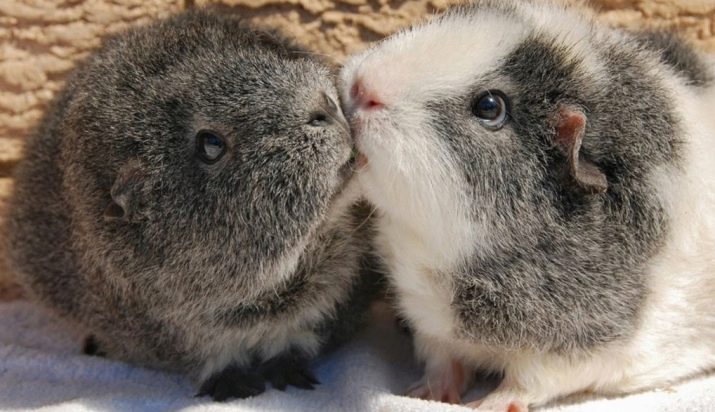
- California. This breed was bred in Peru, but a huge amount of breeding work takes place in California. In terms of its constitution and coat, it is very similar to the classic representatives of guinea pigs. This breed is characterized by the presence of hanging ears, round in shape.
A distinctive feature of rodents is a contrasting color. With age, the color of the coat can turn to chocolate or red. Representatives with blue and lilac cover are also found.


- Sheltie. This breed of animal has a long coat. Its structure is straight. The so-called mane is located on the head. Until a certain age, the hair of guinea pigs remains short.
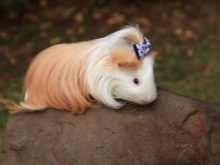


- Selfie. These short-haired animals are considered the most popular among pet lovers. The animal captivates by the fact that the color scheme of its cover is very diverse and contrasting.

Home content
Immediately after purchasing a guinea pig, the pet goes through a process of adaptation to new conditions. Therefore, you should not be surprised if at first the animal behaves very quietly and calmly. Rodents at this time are afraid of any rustle and practically do not move. Also, at the initial stage of adaptation, pets eat very poorly.
The owners of the animal will help speed up the habituation process, creating comfortable living conditions for him.
Feeding
The animal must eat well, it is necessary that the diet consists of four meals. One serving is 2 tablespoons. At first, the guinea pig may not eat everything. But this does not mean that the portion size needs to be reduced. The well-being of these animals is the key to excellent health.
Guinea pigs feed on hay and fresh grass in summer. During the pregnancy of the female and the feeding of the offspring, feeding is carried out no more than twice a day. Parsley is contraindicated during this period. It is recommended to add vitamin C to the water intended for pets, if the feed does not contain this component in its composition.


Foods that should be in the pet's diet:
- cucumbers;
- salad;
- beet;
- pears;
- corn;
- pumpkin;
- apples;
- Bell pepper;
- carrot.



Cabbage is best given to animals in limited quantities. Dried rose hips can be added to the feed. Leaves of herbal plants can also be used as additives. You can also add small amounts of table salt to the food of the animal (up to 2 grams).
Pure cereals are strongly discouraged from giving to pigs., as this can adversely affect health, and subsequently lead to obesity of the pet. They must be mixed with vegetables or herbs.
You cannot saturate the animal's diet with products from the human table.

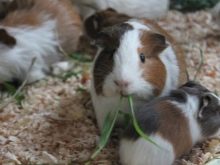

Cage and accessories
One guinea pig can be housed in a small cage, it should be at least one meter long. It is desirable that its rods be painted over. It is also necessary to take care of the presence of a small door for the animal.
If possible, it is recommended to keep the animal in an aviary, then it will be able to walk around the perimeter.
The animals are not able to move in height, therefore the cages, multi-tiered in their structure, are not suitable for keeping a guinea pig. A drinker for them with a volume of 0.25 liters and a food container should be placed in the cage. Purchase of a pet carrier is recommended.



Games and training
Such animals are easy to train if you deal with them daily. It is possible to accustom a guinea pig to the hands in a short period of time, these animals quickly get used to their owners.

The best way to train animals is to use a variety of treats. You also need to play with the animals, because guinea pigs live in flocks and are easily stressed when alone. Even one workout will be enough to tame.




Diseases
In order for the animal not to get sick, it is enough to adhere to the basic rules for keeping pets. The most common diseases in guinea pigs are related to the digestive system. Also, guinea pigs can be exposed to colds.
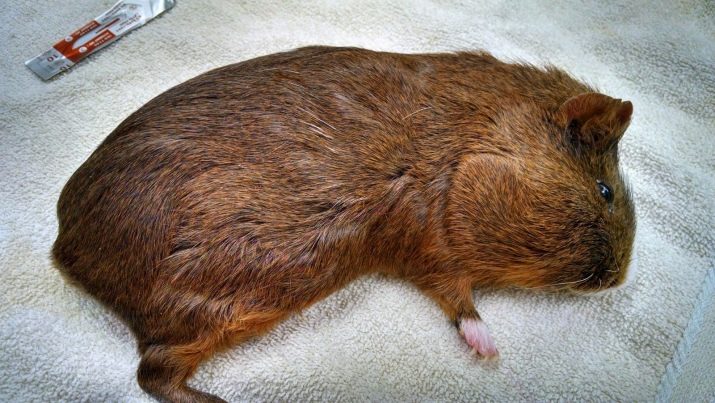
Symptoms of the disease:
- thirst;
- unusual behavior;
- breathing problems;
- cough;
- decline in activity;
- loose stools;
- the formation of skin ulcers;
- the animal may begin to molt;
- runny nasal discharge;
- parasites in the wool.
At the initial stage of the disease, it is recommended to consult a veterinarian.

Vaccination
After acquiring a guinea pig, it is best to keep it isolated and away from contact with other pets for two weeks. Domesticated rodents usually do not need vaccination. In some cases, you can do vaccination against bordetellosis. This does not mean that the animal will be safe from this disease. The vaccine will only alleviate the symptoms of the disease. For this reason, many do not resort to this preventive method at all.


Care
It is believed that guinea pigs are not picky about grooming. The process will not take much of your time and effort.
- Long-haired guinea pigs should be brushed at least once a week.
- It is necessary to regularly inspect the body of the animal.
- Don't forget to cut your guinea pig's nails. This is done very carefully so as not to injure the pet. You can trim them with a special nail clipper or nail tweezers.
- It is recommended to ventilate the room in which the pet is kept from time to time.
- Cleaning is done every 4 days.
- If the wool is heavily soiled, it must be washed with shampoo.
- Give your pet anthelmintic drugs at least once a month.



Breeding
Guinea pigs are capable of rapid reproduction. The main thing is to properly care for the female and her offspring, otherwise the animals may experience complications. There can be a maximum of 8 cubs in one litter.
At the age of five months, the animals are ready to breed. In this case, the weight should not be less than 700 grams. Animals of only one breed are crossed. Breeding can be done no more than twice a year. Animals mate when the female begins to estrus. On average, this process takes six weeks. No human intervention required. Knitting can last no more than two seconds.

The gestation period lasts depending on the number of cubs. This process usually takes 65 days. It is strongly not recommended to disturb the pregnant female in every possible way, since any such actions can lead to a miscarriage. The cage should be disinfected before delivery. The bottom must be filled with hay.
The male must be kept separately during pregnancy and lactation.


Childbirth in a guinea pig lasts for an hour. Small animals are born with wool and sighted. In most cases, the shell in which the cub is born is gnawed by the female. In some cases, this process requires human intervention.
At first, the mother herself feeds the offspring with her milk. Small guinea pigs begin to eat food within a week after birth. The mother is separated from the offspring after one month.
In order for the guinea pigs to be emptied, it is recommended to lubricate the anus with a cotton pad, which is pre-moistened with olive oil.
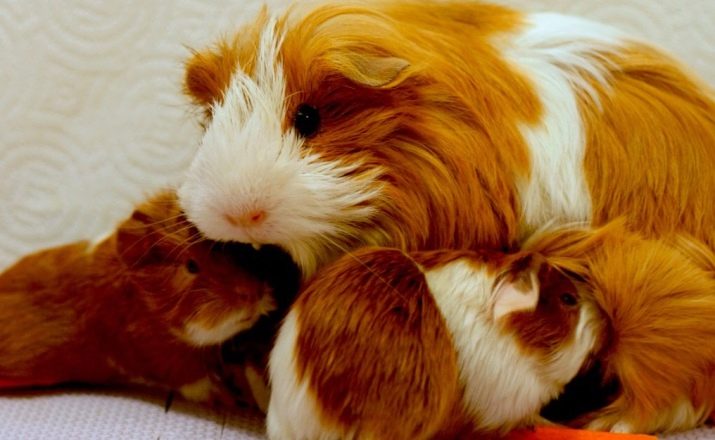
Interesting Facts
Few people know that guinea pigs were named so not because they love reservoirs or water procedures, but because in the old days they were brought to our region from long sea voyages.
It is interesting to know that guinea pigs have a unique language of sounds. Thus, by the sounds, you can easily determine the mood of the animal.
- Continuous beeping indicates that the pet is hungry.
- When the pigs greet each other, they start grunting. It also means that animals study each other.
- If the pigs chatter their teeth or growl at each other, this indicates irritation of the animals.
- Guinea pigs can even cluck. This behavior indicates a good mood of the pet. This also applies to cooing.
- If you hear a prolonged squealing, then this indicates that the animal is experiencing pleasure. In this case, the animal may whistle.
- Before mating, individuals of the opposite sex begin to coo.
- When your pet moans very loudly, it may indicate that he is in pain. If in this case it is practically motionless and is in a state of drowsiness, it means that the animal is sick. Also, evidence of the disease can be evidenced by the formation of nitrous oxide in the eyes.
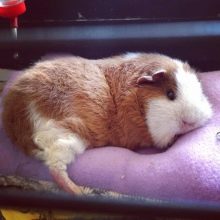


Owner reviews
Many owners buy guinea pigs to breed them. These animals are often very expensive. But you cannot do without this, because for successful crossing it is recommended to acquire animals with a good pedigree.
The owners of such pets do not recommend crossing animals of different breeds.
If in the future you plan to participate in various exhibitions, then mating short-haired and long-haired rodents is contraindicated.
As a result, the offspring will be classified as low-quality decorative animals. Also, in the case of crossing guinea pigs of different breeds, the offspring may be born with various defects, and their development will be very slow.

Many are also of the opinion that it is much more practical to have a guinea pig than a cat or dog. Such an animal is less of a hassle and takes up much less space in the house.

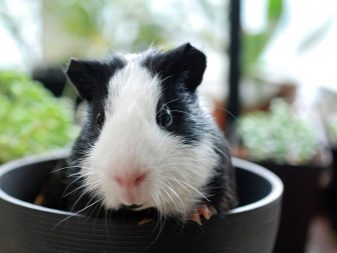
Some complain about the aggressiveness of guinea pigs. In this state, they can even bite. Basically, this kind of problem is faced by owners who do not pay enough attention to the pet.


Recently, pet lovers have begun to give preference to original animals. Exotic breeds of animals are becoming more and more in demand. Therefore, pig breeding is gaining momentum today, a lot of breeding work is underway in this industry.

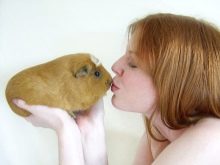

If you are still in doubt whether to buy a guinea pig or not, then the following video will help you make the right choice. It talks about all the pros and cons of keeping and breeding.








